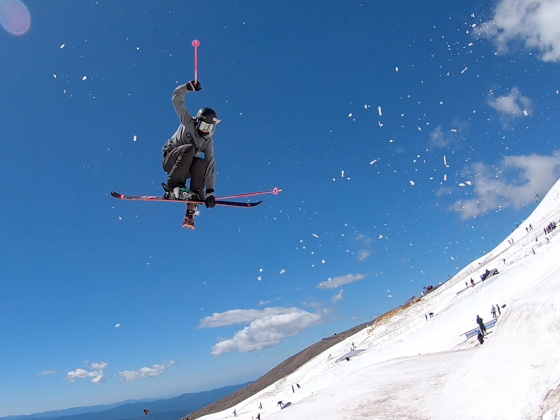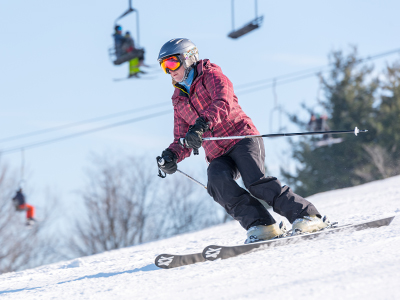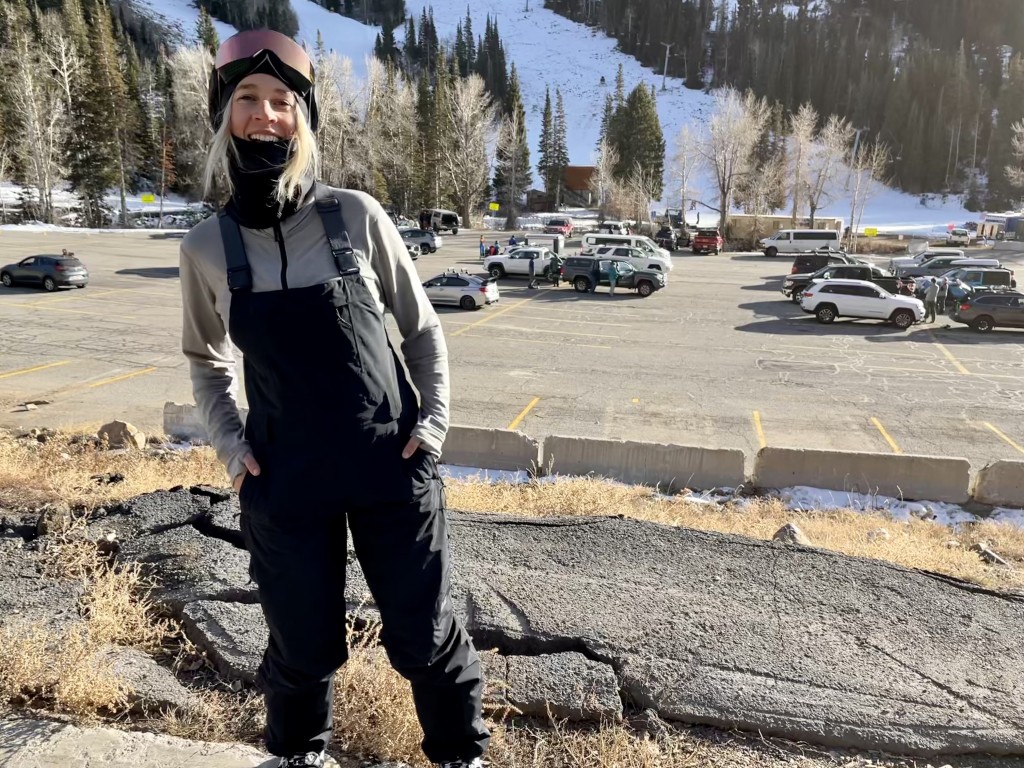
Skiing long jump is a sport in which athletes jump from hills, relying on their body position and the lift of the air below them. It's considered one of world's hardest sports.
Skiers are required to use a wide range of body positions that maximize their chances of landing safely and getting as much lift from the air above them as possible. Among the most popular positions are a forward lean from the ankles with knees straight, skis held parallel and angled slightly upward, and the V style of jumping (point the tips of the skis outward in opposite directions).
Jan Boklov, a Swedish jumper from the 1990s pioneered the use of front edges to point uphill or downhill. This position minimised wind resistance and played a major role in the development longer ski jumps.
For long distance jumps, judges consider the jumper’s body position while on the floor, in mid-air and after landing. Each judge is awarded up to a maximum of 20 points for their assessment of the jumper’s form and style.

The length is determined by a number of factors, including the size and shape of the hill for the competition in question, as well body positioning and the lift of the air below. The smallest size of hill is called a K point, while the largest is referred to as a HS.
Five judges score and inspect each jump. Each jumper gets two jumps and the athlete with the highest score wins. The five judges determine the distance covered and the style by grading it from 0-20. Points are awarded for each metre the jumper has K-point.
Historically, the length of a jump was determined by the run length before the start of the jumping competition (90 meters for the normal hill and 120 meters for the large hill), but for the 1992 Olympics the jumps were referred to by their K-point distance. Since then, the jumps were categorized according to their distance in K-points (normal hill 98 meters and large hill 125 meters).
Ski jumping may seem easy for most people, but it takes a lot of practice. In order to train for a big jump, skiers should learn to use their legs as well as their arms to do plyometrics that develop explosive power.
Athletes will also need flexibility and good balance to navigate the steep hills and ice-filled channels. These conditions are especially dangerous in winter, as they make it hard for jumpers to control their speed and direction during a jump.

Yuki Ito holds the World Record in this category with 154m. The record was set at the Bad Mitterndorf Ski Jump in Austria during a training jump. It is still valid in this location.
Ski jumping is a popular event in the Olympic Games, despite the risks. This is due to the sheer excitement of exploding into the sky. Skiers from all over the globe are drawn to the Olympics and strive each year to qualify.
FAQ
What should I pack for a vacation trip?
It's important to decide what you want for your holiday. It's more than packing clothes. You should also consider where you are going to be staying and for how long.
Think about the activities that you are interested in. You might want to go scuba diving if your destination is exotic. Participating in local festivals or events is a good idea if you're planning on staying somewhere for a longer time.
It is crucial that you inform the people responsible for your care if you have any health problems. They can then plan accordingly.
How long does it take to fly between two countries?
The time taken to fly varies depending on the distance between the airports and the weather conditions.
Average flight time is about 3 hours.
The actual flight time is dependent on many factors, including the airline, aircraft type, delays at the airport, weather conditions, and the airline.
Should I buy travel insurance?
Travel insurance is essential for anyone who plans to go on an adventure. You should ensure that you have coverage for all types and forms of adventure sports.
You should make sure you have insurance if you ski. You should also consider getting coverage for theft, damage, and loss.
Consider purchasing cancellation coverage. This will allow you to cancel your holiday with no penalty.
In addition, you should ask for cover for emergency evacuation. You can also be taken off the mountain in the event of an avalanche, or another natural disaster.
Statistics
- No Checked Bags: No Alcoholic beverages with more than 70% alcohol (over 140 proof), including grain alcohol and 151 proof rum. (tsa.gov)
- They're also likely to offer babysitting services, in case you'd like to have dinner one night after 7 p.m. (travelandleisure.com)
- Case in point: the private island of Ilha Caldeira, less than seven miles off the coast as part of the Primeiras and Segundas Archipelago, is located within the marine-protected area with 20 percent of the country's intact living coral. (travelandleisure.com)
- According to Maori legends, this park holds 14 fjords that were all carved by a giant stonemason with an adze. (busytourist.com)
- You can use compression sacs or cubes to reduce the volume of your clothes by up to 80%—this is especially convenient for bulky items such as sweaters and jackets. (eaglecreek.com)
External Links
How To
How to find international flights at a discount
Cheap International Flight Searching has become very popular due to the rise of online travel agencies (OTAs) such as Expedia, Travelocity, Orbitz, Priceline, etc., which offer low airfares at discounted prices.
But, it is important to understand that your flight search results can be affected by many factors when searching for international flights. These factors include:
-
Which airline you choose.
-
Your destination city.
-
Your departure date.
-
Your arrival date.
-
The length of stay.
-
The number and type of people that travel together.
-
Passengers' age group.
-
It does not matter if it is peak season or not.